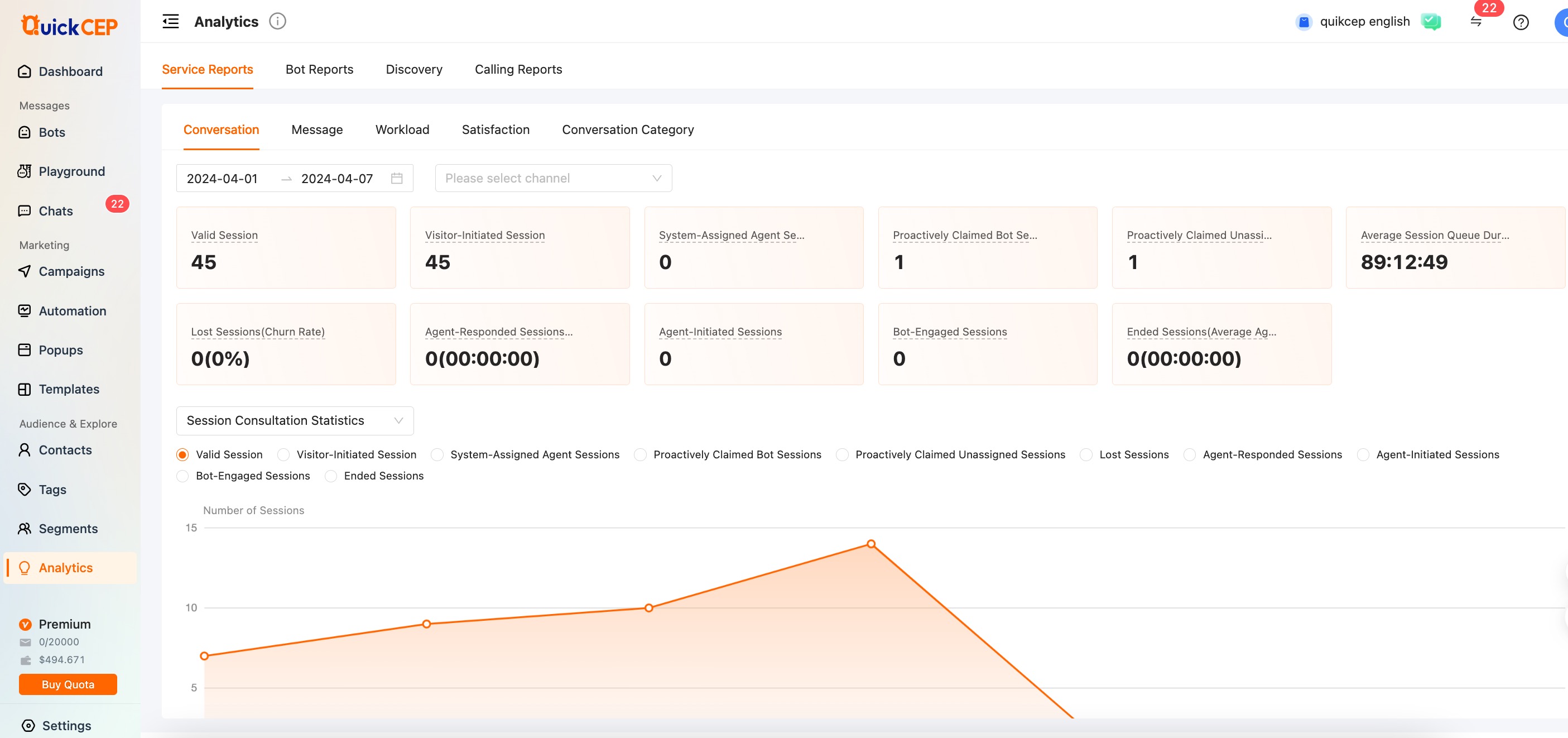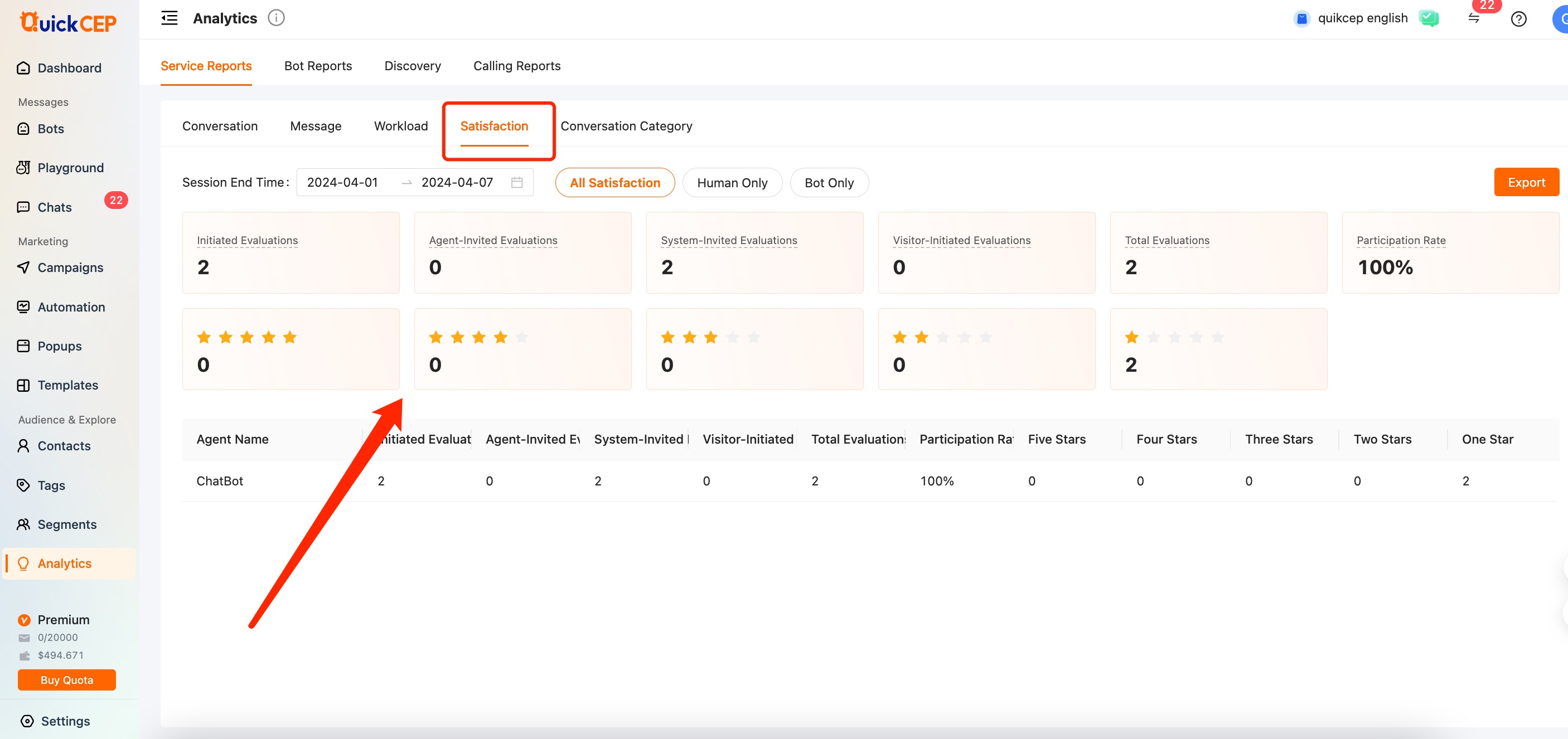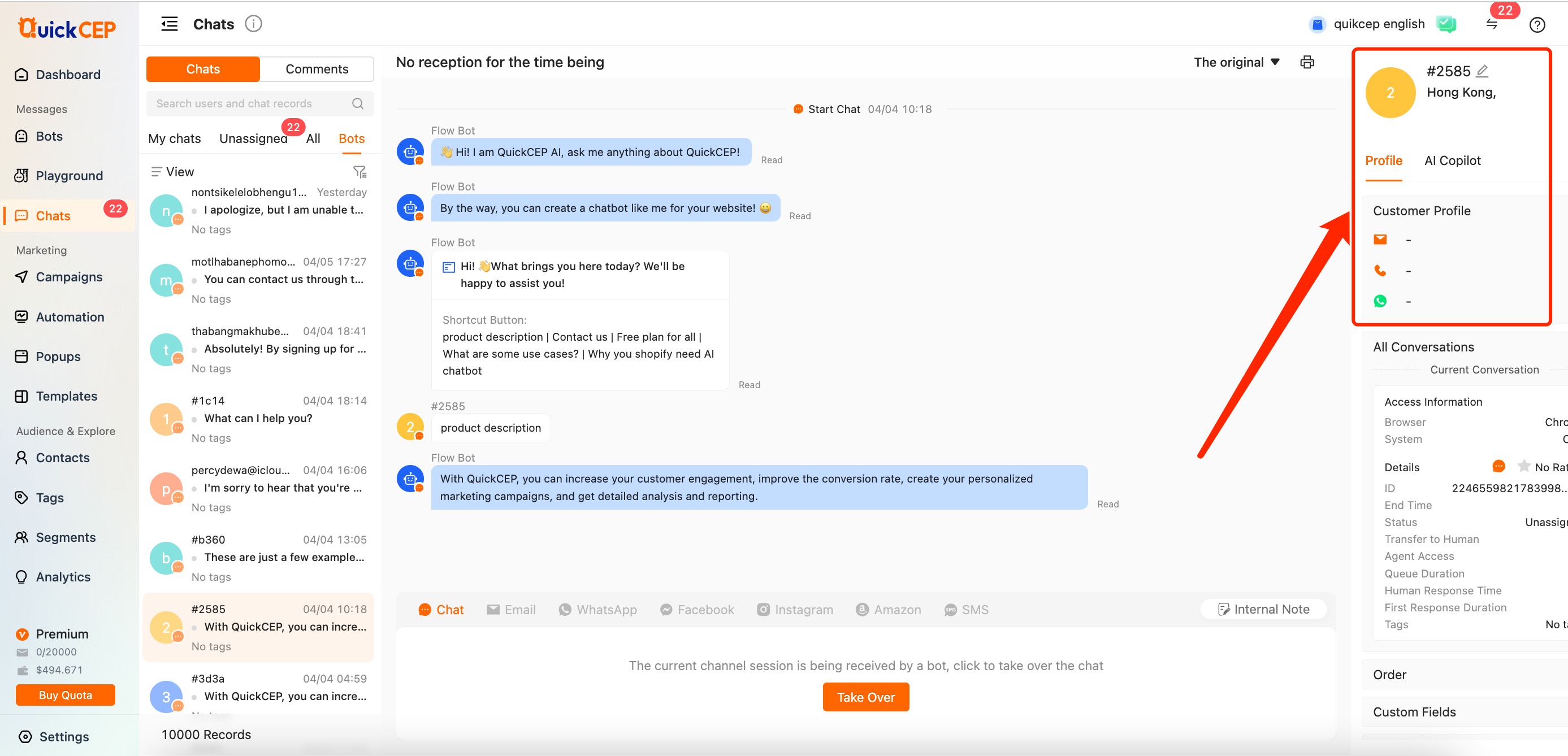4 Essential Steps for CX Excellence: Help Desk Checklist Guide

Introduction to Achieving CX Excellence
In today's competitive business landscape, achieving CX Excellence is crucial for standing out and retaining loyal customers. But what exactly is CX Excellence, and why does it matter? Let's delve into the significance of delivering exceptional customer experiences and explore the pivotal role that a help desk plays in this endeavor.
Why CX Excellence Matters
Delivering outstanding customer experiences is no longer just a differentiator; it has become a necessity for businesses across industries. CX Excellence encompasses every interaction a customer has with a company, from the initial point of contact to post-purchase support. It directly impacts customer satisfaction, loyalty, and advocacy. Research indicates that CX Excellence can lead to increased revenue, as satisfied customers are more likely to make repeat purchases and recommend the brand to others. Therefore, prioritizing CX Excellence is essential for long-term success and sustainability in today's market.
How a Help Desk Plays a Crucial Role
A help desk serves as the frontline support system for addressing customer queries, concerns, and technical issues. It acts as a central hub where customers seek assistance and solutions related to products or services. The efficiency and effectiveness of a help desk directly influence the overall customer experience. When customers encounter challenges or require guidance, they turn to the help desk for timely resolutions and expert support. As such, the help desk plays an indispensable role in shaping customers' perceptions of a company and its commitment to delivering exceptional service.

Step 1: Understand Your Audience
To achieve CX Excellence, it is imperative to have a deep understanding of your audience. This involves creating detailed customer personas and tailoring communications to meet their specific needs and preferences.
Creating Customer Personas
Creating customer personas begins with gathering relevant data from various touchpoints and analyzing customer feedback. By collecting information on demographics, purchasing behavior, and pain points, businesses can develop comprehensive profiles that represent their target audience accurately. Understanding the unique challenges and motivations of different customer segments enables organizations to personalize their approach effectively.
Gathering Data
The process of gathering data involves leveraging multiple sources such as sales records, website analytics, and social media insights. By collating this information, businesses can gain valuable insights into the preferences and behaviors of their customers.
Analyzing Customer Feedback
In addition to quantitative data, qualitative feedback from customer interactions and surveys provides invaluable context. Analyzing this feedback helps in identifying recurring issues, uncovering unmet needs, and gaining a deeper understanding of the customer experience.

Tailoring Communications
Once customer personas are established, it's essential to tailor communications in a way that resonates with each segment. Personalizing interactions and using clear, simple language are key components of effective communication strategies.
Personalizing Interactions
Personalization involves customizing interactions based on the preferences and characteristics of individual customers. Whether through personalized emails or targeted promotions, addressing customers by name and offering tailored recommendations fosters a sense of connection and relevance.
Using Clear and Simple Language
Communicating in clear and simple language is crucial for ensuring that messages are easily understood by all customers. Avoiding jargon and complex terminology enhances clarity while minimizing the risk of confusion or misinterpretation.
By understanding your audience through customer personas and tailoring communications accordingly, you can lay a strong foundation for delivering exceptional experiences at every touchpoint.
Step 2: Equip Your Help Desk Team
In the pursuit of CX Excellence, it is imperative to equip your help desk team with the necessary skills and tools to deliver exceptional support and service. This step involves comprehensive training for excellence and providing the right tools that empower help desk agents to address customer needs effectively.
Training for Excellence
Technical Skills
Help desk agents must possess a strong foundation in technical skills to troubleshoot issues, navigate systems, and provide accurate solutions. Proficiency in understanding software functionalities, diagnosing technical glitches, and resolving common user errors is essential for delivering efficient support. Ongoing training programs focused on technical proficiency ensure that help desk teams remain adept at handling evolving technologies and complex customer inquiries.
Soft Skills
In addition to technical expertise, cultivating strong soft skills is equally vital for help desk personnel. Effective communication, active listening, empathy, and problem-solving abilities are paramount in fostering positive interactions with customers. Empathizing with customer frustrations, articulating solutions clearly, and demonstrating patience contribute significantly to overall customer satisfaction. Training initiatives aimed at enhancing these soft skills enable help desk agents to engage with customers in a supportive and empathetic manner.
Providing the Right Tools
Help Desk Software Features
Equipping your help desk team with robust help desk software is instrumental in streamlining support processes and enhancing operational efficiency. The software should encompass features such as ticket management, knowledge base integration, automation capabilities, and reporting functionalities. These features enable agents to manage customer queries systematically, access relevant information swiftly, automate repetitive tasks, and gain insights into support performance.

Integration with Other Systems
Seamless integration of help desk software with other organizational systems amplifies its effectiveness in addressing customer concerns comprehensively. Integration with CRM platforms allows agents to access customer profiles seamlessly while handling tickets. Furthermore, integrating the help desk system with inventory management or order processing systems facilitates swift resolutions related to product inquiries or service fulfillment. This interconnectedness enables a cohesive approach towards addressing customer needs across various touchpoints.
By investing in comprehensive training programs for both technical expertise and soft skills while providing advanced help desk software equipped with essential features and seamless integrations, organizations can fortify their help desk teams to deliver exceptional support experiences consistently.
Step 3: Implement Efficient Processes
In the pursuit of CX Excellence, implementing efficient processes is paramount to ensure seamless issue resolution and effective communication. By streamlining support operations and optimizing communication channels, organizations can elevate the overall customer experience.
Streamlining Issue Resolution
Creating a Knowledge Base
A comprehensive knowledge base serves as a valuable resource for both help desk agents and customers. It encompasses a repository of articles, guides, troubleshooting steps, and frequently asked questions (FAQs) that address common queries and technical issues. By organizing information into easily accessible categories and search functionalities, help desk agents can swiftly retrieve relevant solutions while empowering customers to find answers independently. The knowledge base not only expedites issue resolution but also promotes self-service, reducing the dependency on direct assistance.
Setting Up Self-service Options
Empowering customers with self-service options enhances their autonomy in finding solutions to routine inquiries and minor technical challenges. By integrating self-help portals or interactive troubleshooting modules within digital platforms, businesses enable customers to troubleshoot basic issues independently. This approach not only reduces the volume of incoming support requests but also fosters a sense of empowerment among customers. Furthermore, providing step-by-step guides and instructional videos facilitates a user-friendly experience, promoting customer satisfaction.
Ensuring Effective Communication
Internal Communication Channels
Establishing robust internal communication channels within the help desk team is essential for cohesive collaboration and knowledge sharing. Utilizing instant messaging platforms, internal forums, or project management tools enables agents to exchange insights, seek assistance from peers, and stay updated on procedural changes. Seamless internal communication fosters a supportive environment where agents can collaborate effectively to resolve complex issues while staying aligned with organizational objectives.
Customer Update Protocols
Keeping customers informed about the progress of their inquiries or reported issues is crucial for maintaining transparency and trust. Implementing structured update protocols ensures that customers receive timely notifications regarding the status of their tickets or ongoing resolutions. Whether through automated email updates or real-time notifications within self-service portals, proactive communication demonstrates attentiveness towards customer concerns and reinforces confidence in the support process.
By creating a robust knowledge base enriched with diverse resources and facilitating self-service options for customers, organizations can expedite issue resolution while promoting autonomy among users. Additionally, establishing seamless internal communication channels and adhering to structured update protocols enhances transparency and trust throughout the support journey.
Step 4: Measure and Improve Continuously
In the pursuit of CX Excellence, it is essential to establish a framework for continuous improvement by tracking key performance indicators (KPIs) and leveraging customer feedback to drive enhancements.
Tracking Key Performance Indicators (KPIs)
Customer Satisfaction Scores
Measuring customer satisfaction scores is pivotal in gauging the effectiveness of support interactions and overall service delivery. By soliciting post-interaction feedback or utilizing customer satisfaction surveys, organizations can quantify the level of satisfaction among customers. Analyzing these scores provides insights into areas of strength and opportunities for improvement, enabling help desk teams to align their efforts with customer expectations effectively.
Resolution Times
Monitoring resolution times offers valuable insights into the efficiency of issue resolution processes. Tracking the time taken from ticket creation to successful closure illuminates potential bottlenecks or areas requiring optimization. Shorter resolution times signify prompt assistance and streamlined workflows, contributing to heightened customer satisfaction. Identifying trends in resolution times facilitates targeted improvements in resource allocation and process refinement.
Leveraging Feedback for Improvement
Conducting Surveys
Conducting regular surveys allows organizations to capture diverse perspectives and sentiments regarding the support experience. These surveys can encompass various aspects such as agent responsiveness, clarity of solutions provided, and ease of access to support resources. The feedback obtained from these surveys serves as a catalyst for identifying areas that require attention and aligning support strategies with evolving customer needs.
Implementing Changes Based on Insights
Acting upon insights derived from customer feedback is instrumental in fostering continuous improvement. By analyzing survey responses, identifying recurring themes, and prioritizing actionable feedback, organizations can implement targeted changes that resonate with customers' expectations. Whether it involves refining communication protocols, enhancing self-service options, or optimizing response times, incorporating these insights into operational enhancements reinforces a commitment to delivering exceptional support experiences consistently.
By diligently tracking customer satisfaction scores and resolution times, organizations gain visibility into their performance while harnessing customer feedback as a catalyst for iterative improvements.
Conclusion: Reflecting on Our Journey to CX Excellence
As we conclude our exploration of achieving CX Excellence through a strategic help desk checklist, it's essential to emphasize the significance of commitment and adaptability in this transformative journey.
The Importance of Commitment and Adaptability
Achieving CX Excellence demands unwavering commitment from every facet of an organization. It requires a dedicated focus on understanding and meeting the evolving needs of customers, aligning internal processes with customer-centric objectives, and fostering a culture that prioritizes exceptional experiences. This commitment extends beyond initial efforts, necessitating continuous dedication to improvement and innovation in response to changing market dynamics and customer expectations.
Adaptability serves as a cornerstone in the pursuit of CX Excellence. Organizations must remain agile and responsive to emerging trends, technological advancements, and shifting consumer behaviors. Embracing change with agility enables businesses to proactively address challenges, seize opportunities for enhancement, and pivot strategies to deliver superior customer experiences effectively.
Looking Ahead: The Future of Help Desks in CX
The future landscape of help desks within the realm of CX Excellence is poised for remarkable evolution. Advancements in artificial intelligence (AI), machine learning, and automation are reshaping the support ecosystem, empowering help desk teams with predictive analytics, intelligent chatbots, and personalized self-service solutions. These innovations not only enhance operational efficiencies but also elevate the overall quality of customer interactions.
Furthermore, the integration of omnichannel support capabilities enables seamless transitions between various communication channels while maintaining contextual continuity. Customers can effortlessly switch from live chat to email or phone support without repeating information, fostering a cohesive and convenient support experience.
In conclusion, embracing a future-oriented mindset that embraces commitment to excellence and adaptability will be pivotal in shaping the next generation of help desks within the context of CX Excellence.
See Also
Key E-commerce Customer Support Interview Queries
2024 E-commerce Strategy: Resolving Typical Customer Pain Points for Enhanced Experience
Can Customer Pathway Charts Unlock Smooth Self-Help Experiences?
The Definitive Manual for Customer Pathway Mapping in 2024
The Impact of Real-Time Chat: Boosting Sales and Customer Contentment


